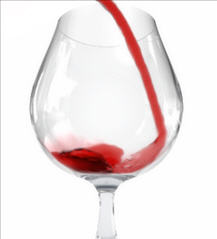Buried within the fine print of the transaction is that in order to gain approval, Leucadia must spin off the Crimson Wine Group, its maker of fine wines. Apparently (at least according to the amended Form 10), Jefferies’ management deemed Crimson to be ‘less strategically relevant’ and believed that it was not worth more than its carrying book value. As a result, the two sides agreed that the unit should be unloaded prior to executing the merger. Leucadia also included the usual spinoff rationale boilerplate about giving shareholders and lenders the ability to value each business on its own.
Based on its name, it should be pretty clear how Crimson makes most of its its money. The company operates four wineries in the United States where it produces and sells…wine. The finished product is either sold via distributor (the majority of sales) or direct to customer (much higher margin). Unfortunately, industry regulations often limit the company’s ability to sell direct though and it is worth noting that the industry can be very competitive. Results have been weak the past few years and the company has been negatively impacted by the poor economy. Despite all of this, it is important to note that LUK was committed to investing in the company and growing the business, having made several recent acquisitions. Here are the four main wineries owned by Crimson:
- Pine Ridge Vineyards – acquired in 1991
- Archery Summit – started in 1993 by Crimson
- Chamisal Vineyards – acquired in 2008 and in 2013 is expected to complete a massive expansion project
- Seghesio Family Vineyards – acquired in 2011 and expects to complete expansion project in 2013
The company also owns Double Canyon Vineyards which does not produce wine on site and sells off the vast majority of its grapes.
In order to finance all of those acquisitions and expansions, the company tapped Leucadia’s credit and ran up a nice ‘Due To Leucadia’ balance. This was effectively the company’s debt onto which it paid interest. Like a good parent, Leucadia is giving its child a fresh start as it heads out on its own and is committing the ‘Amount Due’ account into the company’s capital balance, effectively cleaning up its balance sheet. It is also committing $13m in cash to Crimson. While this will improve net income by reducing interest charges for now, the company will have to set up its own revolving credit facility which will be much smaller than it is used to having. It is unlikely to pursue anymore $86m acquisitions (the price it paid for Seghesio) anytime soon. It is important to go through the Form 10 in depth in order to get a better feel for the company’s financial position which is impacted by seasonality and numerous one-time items.
Leucadia shareholders are expected to receive 1 share of Crimson Wine for every 10 shares of LUK owned. The board of directors has established February 25, 2013 as the distribution date for shareholders as of February 11, 2013 (the date of record). As a result, there are expected to be ~24.5 million shares outstanding after the distribution. A group of three insiders will control a hefty amount, ~25%, of those outstanding shares:
- Ian Cumming, LUK Chairman and CEO, owns 8.7%
- Joseph Steinberg, LUK President & COO, 9.7%
- Bruce Berkowitz, manager of Fairholme Funds, 7.4%
This should only exacerbate the liquidity issue bound to arise from the fact that the new company is not planning on listing its shares on any exchange, but will just trade OTC. I am not sure what that will mean for most ordinary shareholders. We know what Jefferies supposedly thinks about the company’s value, but another recent wine focused spin, Treasury Wine Estates (TSRYY), trades at 1.5x Tangible Book (and ~34x P/E and 12.5x TEV/EBITDA).
Disclosure: Author holds no position in any stock mentioned.
